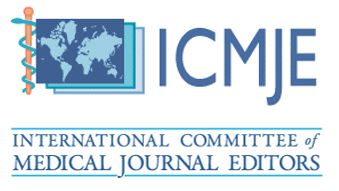Comparative Evaluation of Microleakage and Shear Bond Strength of Glass Ionomer Cement, Composite, Resin Modified Glass Ionomer Cement Restorative Material: An In Vitro Study
Amanjot Singh1*, Sumeet Singh Jaurha2, Harkamal Pannu3 and Amritpreet Kaur4
1 BDS, Gian Sagar Dental College and Hospital, Patiala, Punjab, India.
2 BDS, Harsaran Dass Dental College, Ch. Charan Singh University, Uttar Pradesh, India.
3 BDS, Baba Jaswant Singh Dental College, Hospital and Research Institute, Ludhiana, Punjab, India.
4 BDS, Gian Sagar Dental College and Hospital, Patiala, Punjab, India.
*Corresponding Author: Amanjot Singh, DS, Gian Sagar Dental College and Hospital, Patiala, Punjab, India.
DOI: https://doi.org/10.58624/SVOADE.2023.04.0132
Received: April 15, 2023 Published: May 02, 2023
Abstract
Aim: Evaluation of microleakage and shear bond strength of glass ionomer cement, composite, resin modified glass ionomer Cement Restorative Material.
Material and Method: Thirty freshly extracted non carious teeth, free of cracks and restorations, collected for the present in-vitro study. Teeth were divided in three equal group i.e. group A: Glass Ionomer Cement. Group B: Resin Modified Glass Ionomer Cement, Group C: Composite Resin. All groups' shear bond strengths were evaluated using a universal testing machine. A rod in the shape of a chisel was positioned close to the bonded restorative material and directly next to the flat dentinal surface. To debond the material, a cross head of universal testing machine at a speed of 0.5mm/min was employed. Then, Mega Pascal Units (MPa) were used to calculate the shear bond strength. To evaluate the microleakage two coats of nail polish were applied to the samples, leaving a 1 mm window around the cavity boundaries. A wet cotton pellet was placed over the restoration to avoid desiccation while the nail polish was being applied. Inverted teeth were submerged for 24 hours at 37°C under vacuum in a solution of 2% Rhodamine-B dye. Only the coronal part of the teeth were dyed to avoid dye leakage via the root apices. The surface-adhered dye was washed off the specimens in tap water after removing them from the dye solution, and nail polish was then removed with a BP blade. The teeth were sectioned longitudinally in a bucco-lingual direction through the center of the restorations using a water-cooled low-speed diamond disc. The section with the greater leakage was evaluated with a stereomicroscope at ×25 magnification to determine the extent of dye penetration at the occlusal and gingival margins by two evaluators who were blinded to the experimental groups.
Result: Composite resin showed highest shear bond strength followed by Bond Strength of Resin Modified Glass Ionomer Cement and least with conventional glass ionomer cement. Microleakage was found lower in composite resin as compared to Resin modified glass ionomer cement and glass ionomer cement.
Conclusion: It can be stated that Composite resin and Resin modified glass ionomer cement have good shear bond strength and lower microleakage as compared to Glass Ionomer Cement.
Keywords: RMGIC, Composite, Microleakage, Shear bond Strength
Citation: Singh A, Jaurha SS, Pannu H, Kaur A. Comparative Evaluation of Microleakage and Shear Bond Strength of Glass Ionomer Cement, Composite, Resin Modified Glass Ionomer Cement Restorative Material: An In Vitro Study. SVOA Dentistry 2023, 4:3, 88-92.











